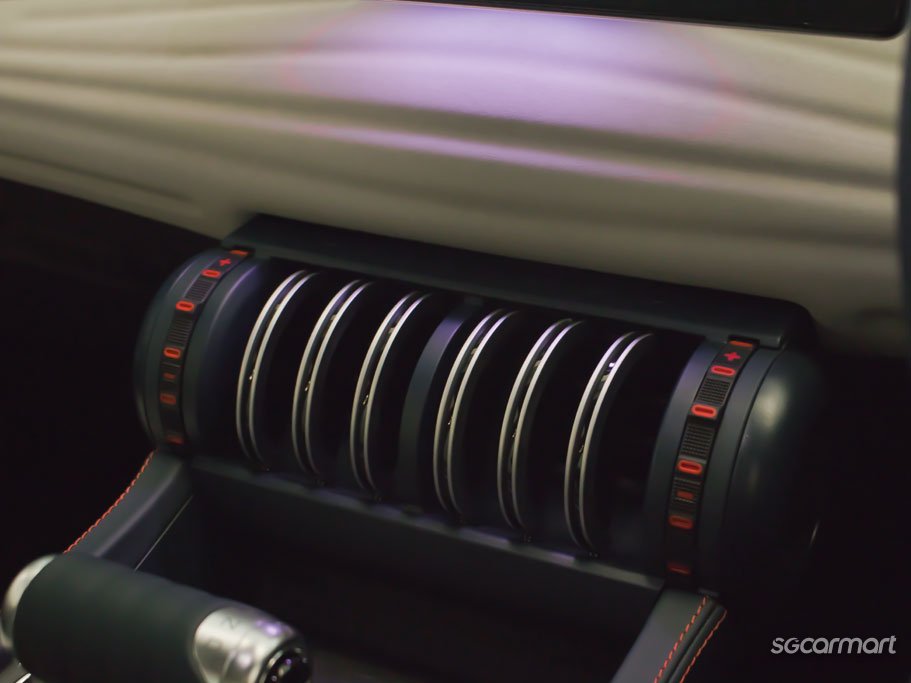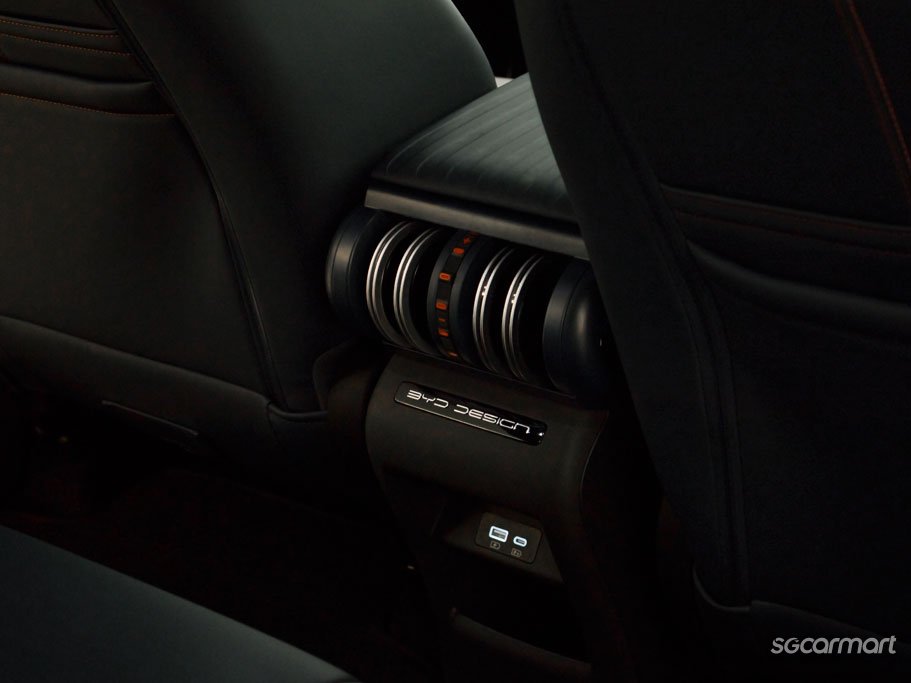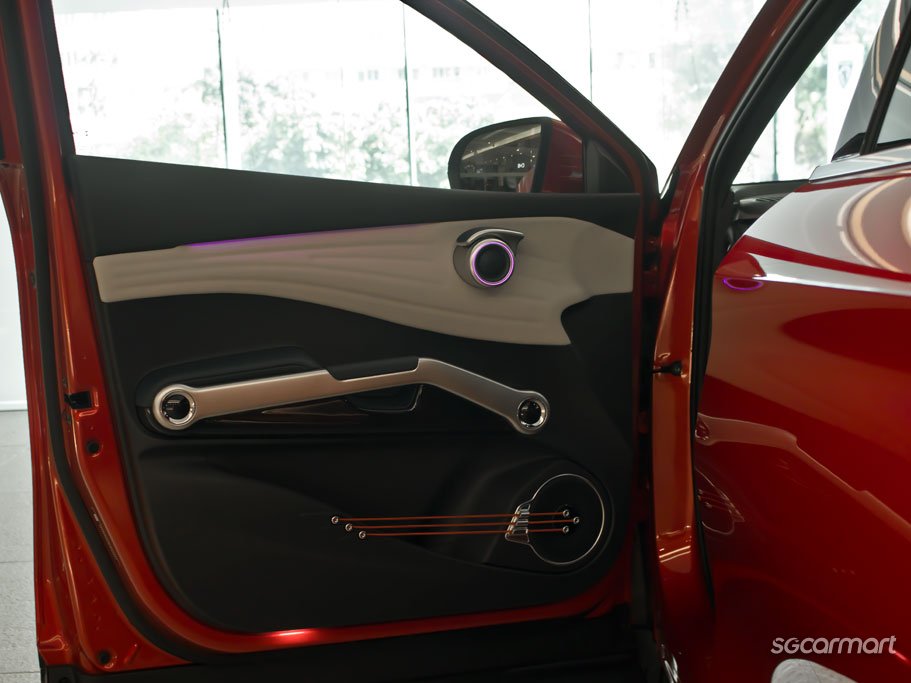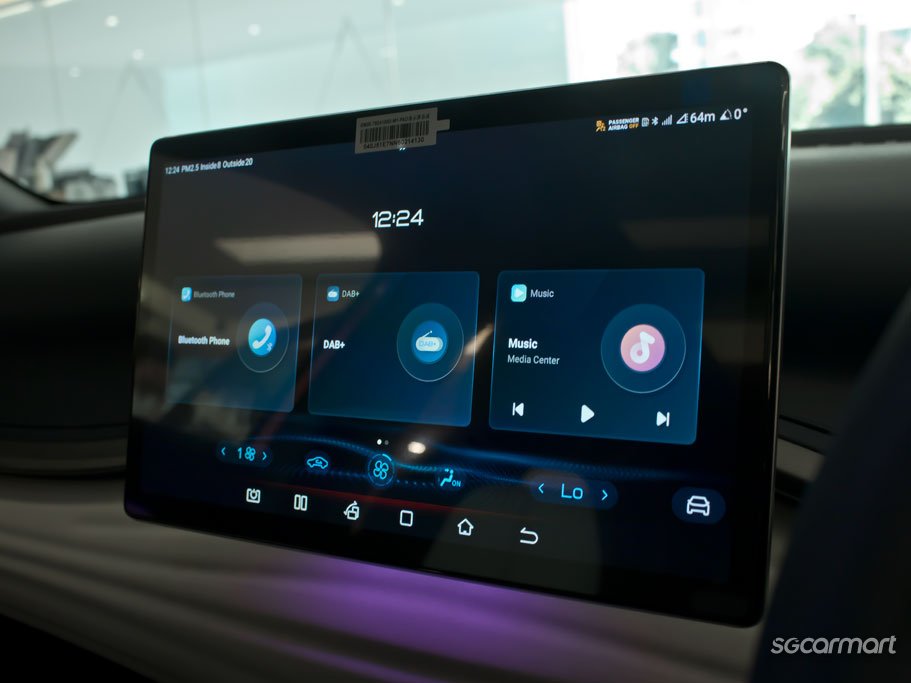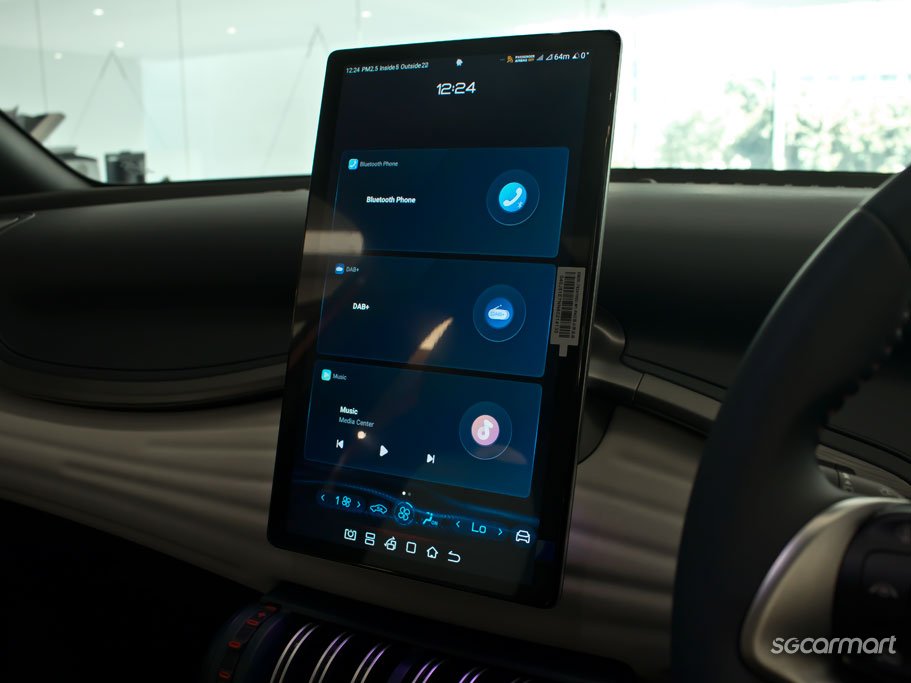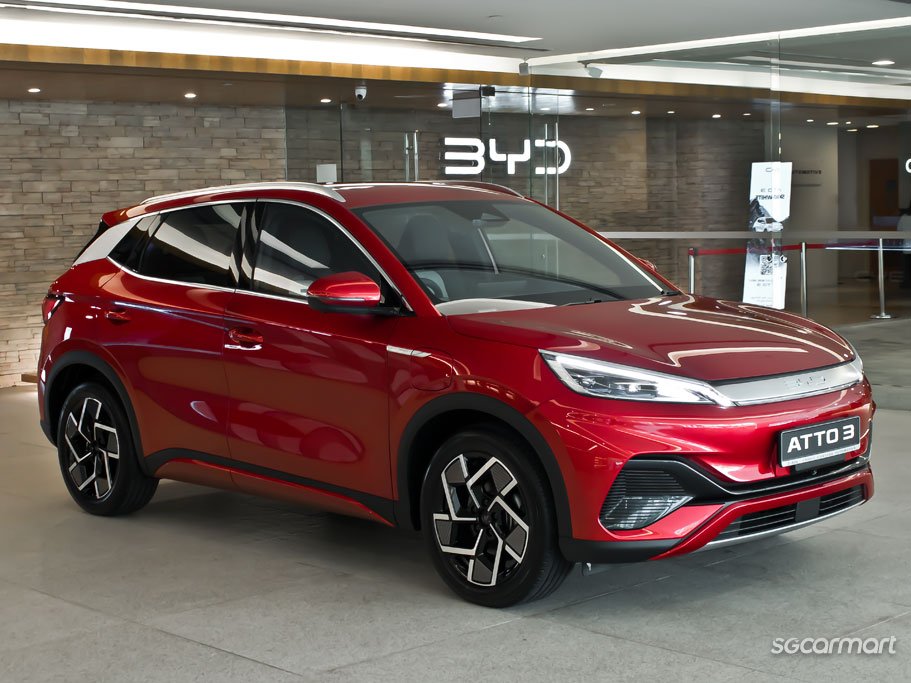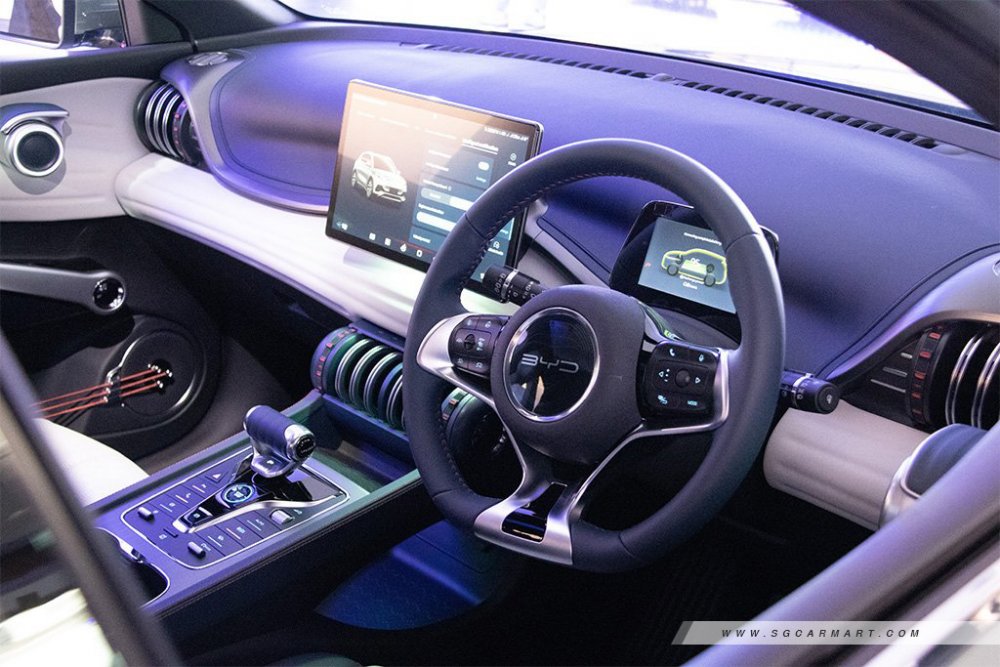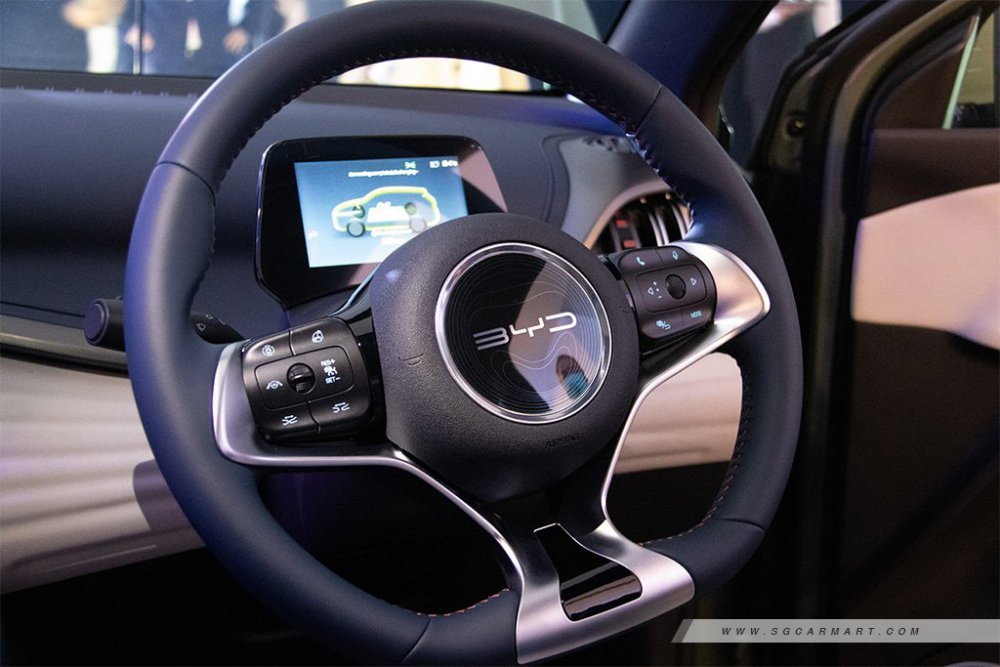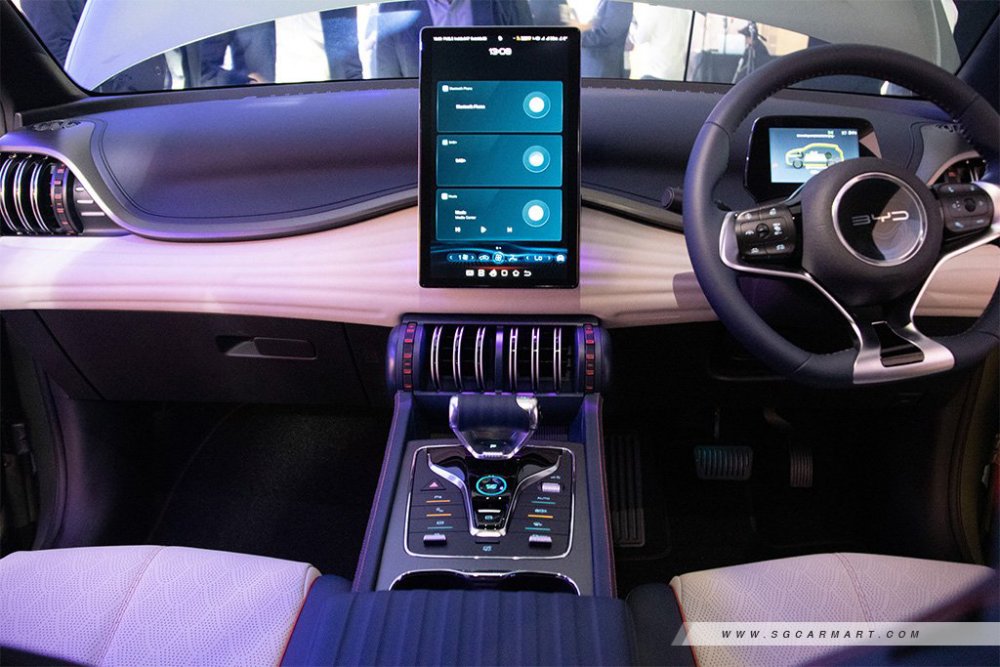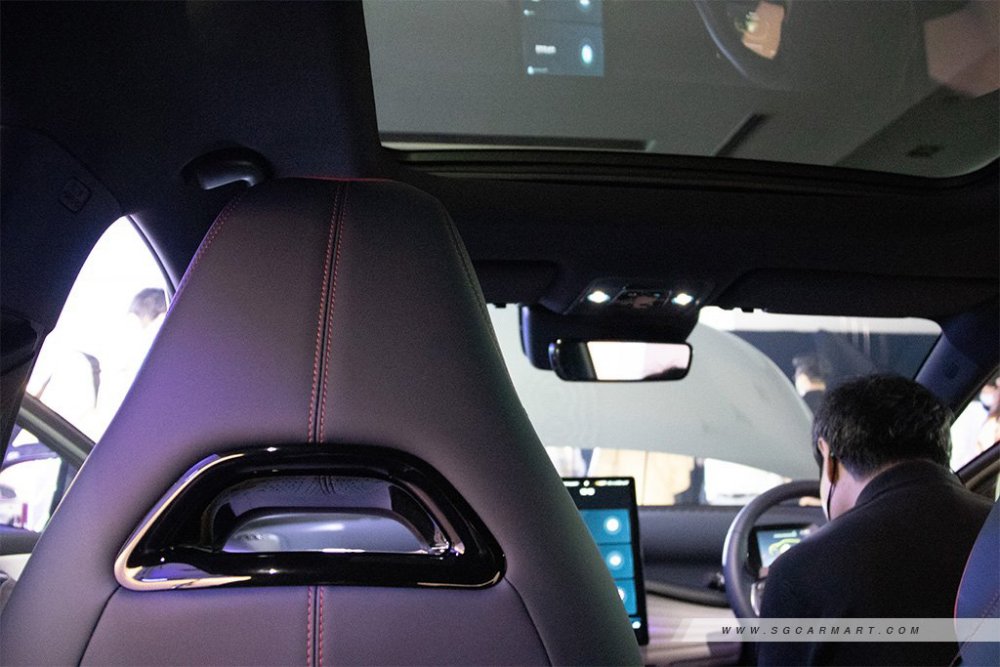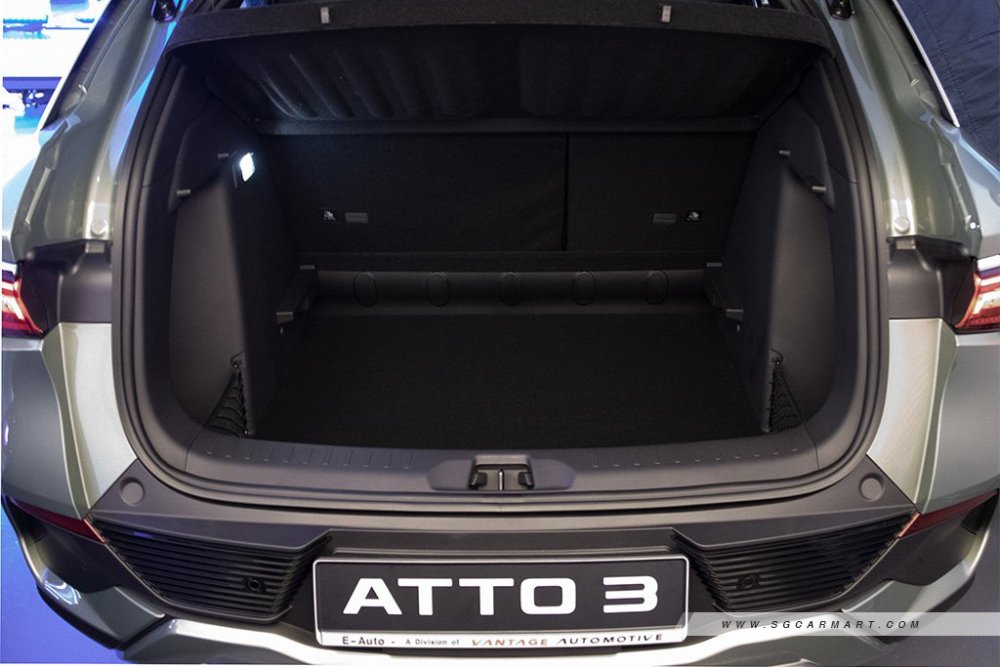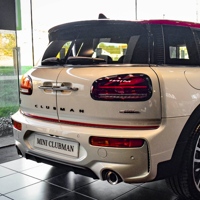Search the Community
Showing results for tags 'Electric'.
-
so after reading so many bad reviews about the civic hybrid and several good reviews about the pirus i'm wondering if 100% electric cars will be a good move in the near future, if the battery can withstand our sunny temperatures anybody got any experience to share? what is the lifespan of such batteries? the civic groups complain a whole lot about their batteries but the people who own the piruses seem to be very happy with their cars, so it does seem like a split down the middle
-
Xiaomi coming soon, no joke. Xiaomi to invest $10bn in electric vehicle race Chinese phone maker Xiaomi is wading into electric vehicles with a $10bn (£7.3bn) investment over ten years. The company will be entering a fiercely competitive electric car market that also includes rivals Apple and Huawei. Xiaomi will set up a wholly-owned subsidiary with an initial investment of about $1.5bn, with the company's chief executive Lei Jun heading up the new venture. "The decision was made after numerous rounds of deliberation among all our partners, and this will be the final major entrepreneurial project of my life," he said in a statement. So far, the company has given no indication about whether it will produce budget models or target the top end of the market. There are already hundreds of companies in China jostling for a share of the world's leading market for electric cars. Xiaomi founder Lei Jun says his company’s first electric car will be an SUV or a sedan, priced between US$15,000 to US$45,000 Xiaomi’s first vehicle will be either a sedan or an SUV costing between 100,000 yuan and 300,000 yuan (US$15,300 to US$45,900), said the Chinese smartphone giant’s co-founder and CEO Lei Jun on Tuesday, shedding light on the new Tesla challenger’s multibillion-dollar venture into electric vehicles (EV). Lei revealed the details during a live-streamed video session on Douyin, the Chinese sibling app of TikTok, to promote Xiaomi products, which came a week after he announced the company’s foray into smart cars. “The first car will definitely not be a sports car or a motorhome; it’d be either a sedan or an SUV,” Lei said, adding that the plans are still at an early stage and the details are still being worked out.
-
Nissan's e-POWER technology gives you the instant power of electric cars with the range and convenience of a petrol car for you to power through life. The automotive industry is one that is ever-changing and always innovating. The world went from petrol-hungry cars to hybrids and electric cars. And the goal stays the same - it is all about keeping pollution at bay and promoting sustainability. We all want a world with a future for ourselves and our future generations. And doing our part does not have to come with any sacrifices; just opt for Nissan's e-POWER range of cars and you can enjoy the best of both worlds between electric cars and internal-combustion engine (ICE) cars while doing your part for earth. Nissan's e-POWER technology allows you to enjoy the driving experience of an EV without the need for charging Enjoy the EV experience without worrying about charging Like an Electric Vehicle (EV), an e-POWER Nissan is solely driven by an electric motor. However, with an ICE onboard to provide charge to the battery when required, there is no need to plug the vehicle in for charging. This means that you won’t have to worry about the need to access a charger while driving one - simply refuel as you would with a conventional ICE car and enjoy the instant power it delivers. Thanks to the ingenious e-POWER technology, you won't have to spend hours to recharge your car, nor would you have to worry about an extremely limited range on a single charge when you go on long road trips. Nissan's e-POWER technology can be found on various cars across its line-up, allowing you to choose something that fits your needs. A stylish and compact hatchback with loads of practicality, the Nissan Note e-POWER is the perfect first car The Nissan Note e-POWER is your perfect first car If you are searching for the first car in your life, you won't go wrong with the Nissan Note e-POWER. This is a stylish and compact hatchback that offers plenty of practicality to go with its look while being easy to drive. In fact, they are such a great first car that even driving instructors are opting for them as learner cars! Apart from being practical and easy to drive, the Note e-POWER has a spacious and comfortable interior Thanks to the e-POWER drivetrain where the 1.2-litre engine is only used as a generator to produce electricity, the Note e-POWER achieves a real-world tested fuel economy of 24.4km/L . You won't have to worry about hefty spendings on fuel. Furthermore, you'll still get to enjoy the instant power from the electric motor that drives the wheels - it puts out 114bhp and an impressive 280Nm of torque for a zippy city driving experience. The Nissan Kicks e-POWER is a cool crossover with lots of personality and style Practicality upsized with the Kicks e-POWER For those with small families who want something with a little more space and increased practicality, the Nissan Kicks e-POWER is an excellent choice. Its elevated ride height makes getting in and out of the Kicks e-POWER an effortless experience The generous 423 litre boot is large, accessible and expandable Being a compact crossover with its elevated ride height, getting in and out of the Kicks e-POWER is easy and effortless. The large and accessible rear cargo space further makes it a great choice for families - with a generous 423 litre boot, loading groceries or a pram doesn't have to be a convoluted process. Inside, you'll get a comfortable cabin that is well put-together with plenty of soft touch materials. You can also opt for the Premium Plus variant and enjoy additional intelligent safety features for a safer drive and amber-coloured Nappa leather for a plush and luxurious ride as well. With 127bhp and 280Nm of torque, the Kicks e-POWER will give you an electrifying drive all while sipping on fuel. The Serena e-POWER is the perfect ride to bring your extended family out for a drive; and even better yet, the stylish new 2024 model is on the way! Maximum hauling capacity for the family with the Serena e-POWER Nissan has truly thought of everything with its range of e-POWER cars - if compact cars aren't what you are looking for, worry not, for there's the Serena e-POWER. If you are someone who often brings your extended family out on outings and trips, or simply enjoy the practical utility of a car that has a large capacity, the Serena e-POWER is just the car for you. With the Serena e-POWER, there's plenty of space, be it for cargo or passengers; it also has a unique dual opening tailgate for maximum practicality With its large angular body shape, the Serena e-POWER offers plenty of cabin space along with the practicality as a cargo hauler when required. It also has a unique dual opening tailgate that allows easy loading of cargo without the need to open the tailgate in its entirety. And above all, the upcoming 2024 Nissan Serena e-POWER will be even bigger and better than the Serena e-POWER that you currently see on Singapore roads! The new Serena e-POWER doesn't just have a fresh, new and stylish design, but it is also faster and even more versatile than ever before. The impressive style of the Nissan X-Trail e-POWER e-4ORCE is unmistakable on the roads Enjoy refined luxury with the X-Trail e-POWER e-4ORCE The X-Trail e-POWER e-4ORCE, with its stylish design might just be the most boldly-designed member of the e-POWER range here. And style isn’t just all that it offers - the X-Trail e-POWER e-4ORCE has a premium cabin that complements its refined and comfortable drive to give you a relaxing and luxurious experience. Hop on inside and you'll be greeted by the premium and luxurious cabin that will seat up to seven Compared to its predecessor, the X-Trail e-POWER e-4ORCE has grown in all aspects to result in a larger cabin that will seat up to seven. With its twin 12.3-inch infotainment display and instrument cluster, along with a leather-cladded interior, the cabin of the X-Trail e-POWER e-4ORCE is decidedly upmarket. With a combined power output of 211bhp and 525Nm of torque, the X-Trail e-POWER e-4ORCE is quite a beast Unlike the rest of the e-POWER lineup, the X-Trail e-POWER e-4ORCE has a 1.5-litre turbocharged engine to rapidly charge up its battery to power its dual motors on each axle. This results in a combined power output of 211bhp and 525Nm of torque propelling it from 0-100km/h in 7.2 seconds. As you can see, the X-Trail e-POWER e-4ORCE isn't just a premium SUV, it is one that has impressive power and the practicality of an eco-friendly e-POWER drivetrain as well. Nissan e-POWER lets you enjoy the best of all worlds Naturally, Nissan's e-POWER is the preferred choice of drivers in Singapore - with close to 4,500 e-POWER models on the road since its introduction , the popularity of these cars is clear to see. In fact, Nissan clinched the position as one of the top five best-selling brands in Singapore last year. What are you still waiting for? You should hop right into your favourite Nissan e-POWER model and start your journey with the instant power that so many are already enjoying on Singapore’s roads. With Nissan e-POWER, you can enjoy the smooth, powerful and seamless drive of EVs without the hassle of charging it, all while enjoying an excellent fuel economy, doing your part to save the earth and your pockets. And there's no compromise to be made - From the compact Note e-POWER, to the sporty Kicks e-POWER, the Serena e-POWER large family MPV, and the luxurious X-Trail e-POWER e-4ORCE SUV available in Nissan's current line-up, there is surely an e-POWER to suit your needs.
-
Source: https://www.motor1.com/reviews/690621/2025-porsche-macan-ev-review/ Welcome to the future. The future of Porsche, at least, and Audi, too, eventually. Underneath that whisp of cladding and all the black vinyl is the new, all-electric Porsche Macan, the first product built upon Volkswagen Group's Premium Platform Electric. PPE is set to deliver a new generation of high-end electric Porsches and Audis to boot. After a day of hustling a prototype of the new Macan around California roads, I'm here to say that the future is looking bright. Bright, but also perhaps a bit murky. While this is an EV Macan, it won't be called "Macan EV" or "Macan Electric." It's just called Macan, and while it is set to enter the market in early 2025, the internally combusted Macan isn't going away. Yes, you'll have your choice of not one but two models built on two different platforms, both called Macan, at dealerships soon. Confusing? A smidge, yeah, but this is very definitely the one you'll want. The Next Generation When it comes to first acts, it's hard to do better than the Taycan. Porsche's first EV made the transition from luscious concept to desirable production machine smoother than most. It'll be a hard act to follow, but from what I just experienced behind the wheel, the new Macan won't be lingering in the second-album doldrums. Let's get some of the critical figures out of the way first – or as many as we can, at least. Porsche is still playing its cards pretty close to its chest on this one, so we're not quite dealing with a full deck. The electric Macan's PPE platform will deliver a battery pack with a capacity of around 100.0 kilowatt-hours, with a range that Porsche says will test "well beyond" 500 kilometers on the European WLTP test. That equates to somewhere north of 310 miles of range, a significant boost over the Taycan's current maximum rating of 246 miles. However, that is on the rather more challenging EPA test cycle. With all that uncertainty, it's difficult to say what the Macan's US, EPA-rated range will be, but somewhere in the 275 to 300 mile range seems reasonable. And how about power? All Macans will be all-wheel drive with a dual-motor setup, but three different power levels will be available. Porsche has yet to figure out just how to brand this thing, but you can imagine it arriving in dealers as something like a Macan 4, 4S, and Turbo to follow current Taycan branding. Porsche again doesn't have specific power figures available, but I was told the top-shelf Turbo trim would manage around 450 kilowatts. That's just a tick over 600 horsepower. The top-shelf Macan GTS today offers 434 hp. That is a healthy jump, to say the least. That power will surely come with a considerable increase over the GTS's roughly 4,400-pound curb weight, too, but Porsche hasn't confirmed a figure. And, just to round out all the TBDs, we don't have pricing on the electric Macan either, but don't be surprised if it starts above the Macan GTS, which currently has an MSRP north of $85,000. Monster Macan Now that we've established all the unknowns let's dig into the known: This thing is a monster. I drove a variety of flavors of electric Macan on a beautiful day hustling through the Malibu hills, but I started in a model that Porsche's engineers would only describe as "top" trim. That meant all the power, all the handling goodies, and the air suspension, lacking only the rear steering option. So, that meant somewhere north of 600 hp put to the road through two electric motors. Unlike on Taycan, the rear motor no longer has a two-speed transmission, but it is augmented by an active rear differential with torque vectoring. I started my day, as so many SoCal drivers do, stuck in traffic, dawdling along over some questionably paved stretches of asphalt. My first impressions were of a car that's remarkably compliant and comfortable for commuting. It's quiet, too, as you'd expect an EV to be, but given this was such an early prototype, I'd expected some squeaks and rattles or some degree of excessive road noise. There wasn't a hint. The roads cleared as I got out of town. As the asphalt started snaking, I was able to pick up the pace. Dropping the Macan into Sport mode delivers an immediate and noticeable change in character. The throttle response immediately sharpens, the suspension likewise stops being so soft and starts getting real. After being nearly lulled to sleep in earlier gridlock, I confess I was not expecting the new Macan to be such a powerhouse in the turns. The harder I pushed, the better it responded, really coming alive when I twisted the mode dial over to Sport Plus. Soon I was comfortable enough to have the all-season Continental tires at both axles squealing in complaint through the corners. The Macan did remarkably well at managing the grip from those increasingly overtaxed tires. Yes, the Macan tended to understeer, but in the sort of safe, predictable way that makes sense for a car like this. That understeer wasn't terminal by any means. Turning the wheel a little more and adding a little throttle resulted in the nose coming around every time, that rear differential doing its magic. Oversteer was easy to provoke, and the Porsche's various stability management systems were kind enough to let me enjoy it. In hours of overly aggressive driving, tires squealing, I only felt one significant intervention. And the power? Addictive. On Sport Plus, the throttle is incredibly sharp, the kind of delivery that may cause neck injuries for passengers not receiving fair warning before you step on it. The power requires some modulation as you accelerate out of tight corners, but that rear differential does a lot of work to keep the thing moving in the right direction. I later sampled cars with the rear-steering system, and that just added more agility to the mix. It's paired with an even sharper variable steering ratio to make the car feel almost too eager to get to the apex, a feeling that is utterly addictive. And the less-powerful electric Macans? While they certainly lacked the eye-opening thrust of that top Turbo (or whatever Porsche calls it), they're still properly quick. Their accelerative performance should be easily on par with any of the internally combusted Macans. The feeling across the range there is equally good when it comes to braking. The brake pedal has confidence-inspiring firmness yet still enough travel to comfortably work through traffic without complaint from back-seat passengers. That feel, though, is entirely synthetic. The electric Macan uses a brake-by-wire pedal system that, behind the scenes, relies on electric regenerative braking as much as possible before seamlessly calling in some help from the physical brakes. Thanks to the Macan's 800-volt battery system, the car can pull a lot of juice from those motors during regen, meaning you'll only need the physical brakes under serious decel. If and when the brake performance is degraded due to temperature or the like, a Porsche engineer told me the pedal feel will modulate to give feedback to the driver. But, on a hard, hot day of charging through the California hills, I never felt a hint of fade, simulated or otherwise. Sadly, though, there's one fly in this ointment: one-pedal driving. Porsche is still sticking to its guns: If you want to slow down, you'll need to move your foot from accelerator to brake. I can't argue with the engineers that it may be the more efficient way to drive, but then you also can't argue that PDK transmissions are quicker and more efficient than manuals, and yet Porsche is quite proud to offer those to its sports car enthusiasts. Plenty of electric car enthusiasts prefer one-pedal driving, myself very much included, and as Porsche gets more serious about EVs, it'd be nice if the company acknowledged that. After all, adding a high-regen mode is a heck of a lot simpler than adding a third pedal.
-
Is it just me, but the front look like borrowed from an Opel SUV... BMW will kick off a new chapter of its electrification strategy in 2025 with the launch of a new platform for electric vehicles. The Neue Klasse (New Class) architecture will underpin at least six new zero-emissions SUVs and today, these spy photos provide an early look at one of those electric models in prototype form. Our spies in Germany sent us a batch of spy shots with what is currently known as the NA5 project, which is expected to arrive in the summer of 2025. The high-riding EV here is believed to be roughly the same size as today’s X3. However, smarter packaging combined with longer overhangs should result in a bigger storage area behind the rear seats, as well as a roomier cabin. In August last year, BMW confirmed the first product to be based on the Neue Klasse platform will be an electric sedan. It will be followed by this SUV here and some sources even claim it will arrive first. We won’t speculate on that topic but we’ll mention production of the electric family hauler is expected to begin in July 2025 in Hungary. “By the end of the decade, the Neue Klasse is expected to account for more than half of our sales,” BMW’s CEO Oliver Zipse said last year.
-
The new Audi Q6 e-tron (not to be confused with the larger 7 seater version for Chinese market) marks the start of a new generation of electrically powered vehicles at Audi. With a new platform, electronics architecture, charging and battery technology, as well as a pioneering design for Audi, the Q6 e-tron paves the way to Audi's all-electric future. It is the first production model based on the Premium Platform Electric (PPE). This makes the all-electric SUV with its new E3 1.2 electronic architecture the new reference for Vorsprung durch Technik. With the Q6 e-tron series, e-mobility is coming from the Ingolstadt plant for the first time. The Q6 e-tron will compete directly with BMW upcoming iX3, which is built on a dedicated platform for Vision Neue Klasse X. Audi Q6 e-tron Quattro S Line Audi SQ6 e-tron
-
Officially unveiled at the Vantage Automotive Centre, the Atto 3 debuts as BYD's first-ever contender in the local compact crossover segment. Coincidentally, the SUV also marks the third passenger-car model by the Chinese maker here, following in the footsteps of the best-selling e6 and van-turned-MPV M3e. A single permanent magnet synchronous motor, paired to a 60.5 kWh Blade Battery, helps to produce 201bhp (150kW) and 310Nm of torque - apparently good for a 7.3 second century sprint. With the Blade Battery, the crossover's NEDC-rated range also clocks in at an impressive figure of 480km. Thanks to its battery architecture, DC fast charging via CCS at up to 80kW is offered on the Atto 3, bringing the battery from 20% to 80% state-of-charge within 42 minutes. AC charging at up to 6.6kW, on the other hand, will see a full recharge done in 9.5 hours. Worth noting is that the Atto 3 falls under the A1 band of the VES, allowing it to qualify for the highest ARF rebate of $25,000. The Atto 3 comes with a refreshing dual-tone interior, mixing blue and beige upholstery (in our eyes at least - the combination is called "Eclipse Blue + Hazy Grey" by BYD) with red-stitching on the seats. Shaped contours across the dash, guzheng-inspired strings along the door bins, and disc-like aircon vents all continue to distinguish the cabin of the crossover. While the driver gets a fully digital five-inch display behind the multi-function steering wheel, taking centerstage is the 12.8-inch Intelligent Rotating Infotainment Display, which can be oriented in either 'portrait' or 'landscape' mode. Another high-tech feature the car offers is the ability to be unlocked and locked via an NFC Keycard. Strangely, it appears that Apple CarPlay and Android Auto will only be available in Q4, although Bluetooth Phone Connectivity does come as standard. A BYD OS App will also debut somewhere down the line. The marque's name is spelt out boldly in capital letters too on the car's electrically-operated tailgate, which opens up to 440 litres of boot space (this can be expanded to 1,340 litres with 60:40 folding seats). Five different colours are available for potential owners of the Atto 3, including Surf Blue and Parkour Red. Test drives for the BYD Atto 3 are now being offered and the car open for booking. Local authorised dealer E-Auto has also announced that the car will launch with a special price of $178,888 (the number is supposed to be auspicious), inclusive of COE. Feature Highlights Wireless Apple CarPlay and Wireless Android Auto Wireless Smartphone Charging Inbuilt Navigation Electric Tailgate Sunroof Driver and Passenger Electric Seats 12.8" Intelligent Rotating Touchscreen 360° View Camera Adaptive Cruise Control Lane Keep Assist Lane Departure Warning Blind Spot Monitor Rear Cross Traffic Alert Front and Rear Pre-collision Warning Had the opportunity to visit Vantage before the Atto 3's official launch and I must say I left the showroom impressed with the direction BYD is going with its electric vehicles. Granted, the interior styling might be a bit tacky for some, but it is mighty packed with features. Full specs and features here.
- 268 replies
-
- 12
-

-
- byd atto 3
- byd
-
(and 4 more)
Tagged with:
-
I started going to shell….. use GreenLots😂😂
-
Overview Porsche is transforming its current lineup of luxury SUVs and sports cars into a veritable stampede of electrified steeds. Before the gas-powered 718 Cayman and 718 Boxster bid farewell, Porsche plans to debut an all-electric 718 EV that's rumored to be available in both hardtop and convertible variants. Few details are available beyond confirmation of its existence, but Porsche did say the electric 718 will ride on a newly developed sports-car platform that works to keep the vehicle as light as possible. Expect a rear-motor-only version to serve as the entry-level 718 EV, while an all-electric GTS equivalent will likely use all-wheel drive to provide additional grip and even brisker acceleration. The 718 EV should have at least 250 miles of driving range, and will likely use a similar 800-volt architecture that allows the large Taycan to DC fast-charge at a rate of up to 270 kWh. We'll update this space as specs become available; we expect the 718 EV to launch sometime in 2025. What's New for 2025? The 718 EV is all-new for 2025 as the Porsche's third electric car, arriving shortly after the launch of all-electric Macan. At a media roundtable in 2023, Porsche CEO Oliver Blume said the all-electric sports car would replace the gas-powered 718 Cayman and Boxster, both of which will persist for roughly two years after the EV debuts. Pricing and Which One to Buy The price of the 2025 Porsche 718 EV is expected to start around $78,000 and go up to $105,000 depending on the trim and options. Base $78,000 (est) S $85,000 (est) GTS $105,000 (est) This is a shot in the dark, but having experienced the gas-powered 718 Cayman and Boxster so thoroughly, we'd put good money on the base 718 EV providing plenty of thrill and usable range to forgo the wildly premium price of a higher horsepower version. It's still too early to say for certain, but go ahead and prove us wrong, Porsche. Slap another 200 horsepower on top, why don't you? https://www.caranddriver.com/porsche/718-ev
- 4 replies
-
- 1
-

-
- porsche cayman
- cayman
- (and 4 more)
-
While it look more like a facelift of the 5th gen Serena (C27), this actually a brand new model from Nissan, and it is now available in 3 drive train options: petrol only, petrol hybrid and ePower (EV). The gasoline version uses a 2.0-liter naturally aspirated engine with 150 horsepower (110 kilowatts) and 200 Newton-meters of torque offered with or without all-wheel drive and a CVT. There's also a hybrid e-Power model (2WD only) with a new and quieter 1.4-liter engine producing 98 hp (72 kW) and 123 Nm. Combined with the electric motor, the total system output is 163 hp (120 kW) and 315 Nm.
- 58 replies
-
- 15
-

-
Mercedes is launching a new model called the EQG. It is based on the current Mercedes G class.
-
A serious Taycan competitor is on the way but... ... official production has yet to be confirmed. Polestar 5 Touted as a GT, the five-door electric liftback won't have a rear window but that shouldn't be much of an issue given how advanced rearview cameras are nowadays. Nevertheless, some people might be put off by the absence of rear glass (just like me). It has a rakish, coupe-like roofline and a more practical tailgate compared to the Taycan and its sister model, the Audi E-Tron GT, which both have a trunk lid. Compared to the concept, it has lost the ultra-slim side cameras and suicide doors while gaining a B-pillar and smaller wheels. To be manufactured in China, this not-a-Volvo EV is slated to benefit from StoreDot's "extreme fast charging" (XFC) technology. It promises to juice up the battery enough for 100 miles (160 kilometers) of range in only five minutes without inflicting battery degradation. Prototypes will be tested with the new tech in 2024 but it remains to be seen whether it'll be available for production vehicles from day one. Polestar 6 The Polestar 6 isn’t going into production until 2026 but that doesn’t mean the automaker doesn't have exciting plans for its electric roadster. Initially, Polestar announced that it would build just 500 examples of the open-top grand tourer but it seems that it has decided to change its strategy – production will be now based on demand. And we already know the demand for the 6 is strong. Within a week after the car’s August 16 production announcement, all 500 build slots received a reservation. Reserved build slots aren’t exactly sales, but they indicate a strong interest in the production version of the electric roadster. The company’s CEO Thomas Ingenlath confirmed in a recent interview with Autocar that Polestar “would not stop at 500 if people want it.” In August this year, shortly after the debut of the Polestar 6, Ingenlath said that the first examples of the electric grand tourer will be delivered to the initial 500 reservation holders. This process will begin at some point in 2026 and once the cars are handed to their new owners, the automaker will move to regular production based on demand. Polestar’s CEO described the 6 as an electric roadster “that appeals to even the most die-hard petrolheads” and said there’s already “high interest from our customers.” At least on paper, the Polestar 6 is impressive. The roadster with a folding hardtop roof is based on the same 800-volt EV architecture that also underpins the Polestar 5. It is powered by a dual-motor powertrain, good for 884 horsepower (650 kilowatts) and 900 Newton-meters of torque. This is enough power for a 0 - 100 kilometers per hour acceleration in just 3.2 seconds. The top speed is electronically governed at 250 kph.
- 11 replies
-
- 6
-

-
- polestar
- polestar 5
-
(and 3 more)
Tagged with:
-
People as old as me would have remember the iconic Renault 5 in the 70s to mid 90s. I am not going to comment on its reliability not performance, since I have no chance to be in one, but good news for the fans of 5. Thus cutie beast is making a come back, abeit as an EV. Patent images published by the World Intellectual Property Organization (WIPO) show the subcompact model in its full retro-modern glory, which stays true to the concept car unveiled in January 2021. Compared to the concept, the production-intent revival of the R5 has lost the rear light bar on the tailgate to make way for a black trim piece. It has bigger side mirrors and traditional handles for the front doors instead of the sleeker ones on the concept that remained flush with the door panel. Mounted on the C-pillar, the handle for the rear doors is bigger now. The black roof and red accents indicate we’re looking at a high-end version of the small EV. It is worth noting the third-generation Renault 5 will be electric-only but won’t ride on a dedicated EV platform. The new hatch that’ll dust off a legendary moniker last used in 1996 will adapt the underpinnings of the Clio by sourcing as much as 70 percent of the hardware to slash production costs by nearly a third compared to the Zoe. The platform has been dubbed AmpR Small (formerly CMF-B EV). Unusual for a B-segment car, it's going to have a multi-link rear suspension, which should translate into sharper handling.
-
Source: https://www.motor1.com/news/686396/2024-hyundai-konda-electric-debut/ Hyundai today released additional details about the 2024 Kona Electric, including preliminary range estimates, specifications, and US availability. The current generation is among the few affordable electric vehicles in the US starting at under $35,000. The next generation is imminent and seems like a significant upgrade, at least on paper. The Korean carmaker had shared powertrain and production details early this year, but now we a few more details on the US-spec model. Design The Kona Electric’s nose is more aerodynamic with cleaner surfacing, and it continues to feature a split headlamp design, although the LED DRL is now full-width. Designers have also attempted to embed the parametric design theme from the Ioniq 5 with the creases on the side profile, and sculpted wheel arches, although reminiscence to its bigger sibling is little to none. It’s also more slippery, with a drag coefficient of 0.27, a slight improvement over the previous figure of 0.29. It also features active grill shutters to improve airflow when closed and cool the battery when open. The EV is longer, wider, and has an enlarged wheelbase compared to its predecessor. It measures 171.5 inches long (+5.9 inches), 71.9 inches wide (+1 inch), and 62.2 inches tall. Boot space is rated at 25.5 cubic feet, while the frunk only offers nine-tenths of a cubic foot (27 liters) of space. Battery, Range The Chevrolet Bolt EV competitor features a marginally larger battery pack, but the range estimates are nearly identical. The current Kona Electric draws power from a 64-kilowatt-hour pack, while the 2024 model will feature a 64.8 kWh battery capacity. Hyundai’s preliminary internal testing has indicated a 260-mile range, just two miles more than the current generation's 258-mile EPA range. The standard battery variant is estimated to have 197 miles of range. Charging times have improved slightly. Ten to 80 percent state of charge (SoC) can be achieved in 43 minutes with 400V Level 3 DC fast charging. Customers living in the colder US regions can also opt for battery pre-conditioning. Power output remains identical, with the long-range version’s front axle-mounted electric motor delivering 201 horsepower and 188 pound-foot of torque, while the standard range variant is rated for 133 hp and 188 lb-ft. More Features New features include vehicle-to-load functionality, with 1.7 kilowatts of maximum power output. There's also a new Smart Regenerative system which can alter the brake energy regeneration strength based on real-time traffic, an improved interior with ambient lighting, body-colored interior accents, and dual 12.3-inch panoramic screens for the gauge cluster and infotainment among other items.
-
20 single-deck electric buses each from BYD and ST Engineering Land Systems 10 single-deck and 10 double-deck electric buses from Yutong The buses will progressively arrive in Singapore from next year, with the final batch delivered in 2020 Source: The Straits Times
-
Another EV to many of us, but it's the first in a series of zero emission battery electric vehicles (BEVs) from Toyota. And it will be on sales from mid of next year. Toyota fans rejoice! Toyota bZ4X Concept is the first model to feature Toyota's new bZ - beyond Zero - naming convention. By 2025, Toyota aims to introduce 15 battery electric vehicles, including 7 Toyota bZ models. The 'bZ' is an acronym for 'beyond Zero', reinforcing Toyota's commitment to not only achieving zero carbon emissions and carbon neutrality, but also going beyond to realise new benefits for the environment, for individuals and for society as a whole. The bZ4X Concept, a medium-size SUV with all-wheel drive, is integral to Toyota's transition from a pure car company to a business dedicated to delivering better mobility for all. It was developed by Toyota Motor Corporation in partnership with Subaru Corporation, drawing on the specific skills and experience of each company. Sales of the production version are expected to commence around the middle of 2022. Toyota bZ4X Concept will be available with a world-first combination of a steering yoke and a steer-by-wire system. This technology gives the driver greater control, removing interference from rough road surfaces and braking, thereby giving a more precise response in line with the vehicle's speed and steering angle. Steer-by-wire also dispenses with the traditional, circular steering wheel, replacing it with a uniquely shaped steering yoke which eliminates the need for the driver to move their hands around the wheel as they make a turn, adding to the car's fun-to-drive quality.
- 76 replies
-
- 15
-

-
Polestar has taken the next step in its development as the electric performance brand with the reveal of the new Polestar 2. Polestar 2 is the new all-electric fastback that brings electric performance cars to a broader and increasingly progressive audience. It offers avant-garde design and a unique customer experience in the premium compact electric segment. Polestar 2 is the first electric car to compete in the marketplace around the Tesla Model 3, with the range starting at a guide price of 39,900 euros. For the first 12 months of production, guide price of the launch edition is 59,900 euros. "Polestar 2 is our first fully electric car and first volume model. Everything about it has been designed and engineered with passion and dedication. As an electric performance brand, and through the forthcoming launch of a portfolio of fully electric cars, Polestar is determined to address the world's air quality challenges. Polestar delivers electric performance cars that are great to own and drive," says Thomas Ingenlath, Chief Executive Officer of Polestar. Polestar 2 is a premium five-door fastback with two electric motors and a 78 kWh battery capacity that will enable a targeted range of 500 km, based on Volvo Car Group's adaptable Compact Modular Architecture platform (CMA). The 27-module battery pack is integrated into the floor and contributes to the rigidity of the chassis as well as improves the car's noise, vibration and harshness (NVH) levels - road noise has been reduced by 3.7 dB compared to a traditional chassis. Polestar will answer the important question of charging Polestar 2 with a smart, convenient and extensive approach. With a connected digital solution available both in-car and on mobile devices, Polestar is setting up strategic collaborations to give Polestar 2 owners easy and hassle-free access to the world's largest public charging networks. For Polestar, performance underlies the entire driving experience. The all-wheel drive electric powertrain in Polestar 2 produces 300 kW (408 hp) and 660 Nm (487 lb-ft). This translates to a 0-100 km/h acceleration time of less than 5 seconds. The standard dynamic chassis can be enhanced by the Performance Pack that improves driving dynamics with Öhlins dampers, Brembo brakes and unique 20-inch forged wheels. Polestar's signature gold seat belts, brake callipers and valve caps complete the performance visuals. Highlighting the technology spearhead role that Polestar plays within the Volvo Car Group, Polestar 2 is one of the first cars in the world to embed an infotainment system powered by Android. The Android backbone provides a solid and adaptable digital environment for apps and vehicle functions to coexist, and brings embedded Google services to a car for the first time - including the Google Assistant, Google Maps with support for electric vehicles and the Google Play Store. Natural voice control and a new 11-inch touch screen display bring the new interface to life. Phone-as-Key technology enables car sharing and a more integrated ownership experience, as well as Polestar's connected services such as pick-up and delivery. It also allows Polestar 2 to sense the driver upon approach. Smart features like enlarged graphics in the instrument cluster allow the driver to easily see the charging status and range before entering the car. Polestar 2 can also predetermine the driver's next move to create a seamless experience with a prepared cabin and quick start sequence. Maximilian Missoni, head of Design at Polestar, comments: "We decided to bring something different to the segment. Our avant-garde design has evolved from Polestar 1 into an edgier, bolder statement. We have also designed a standard vegan interior with progressive textiles that will appeal to the forward-thinking audience who will subscribe to Polestar 2." Design-led features include Pixel LED headlights and proximity lighting which enable a unique welcome sequence, Polestar's now-signature frameless side mirrors and the unique illuminated Polestar logo, which is reflected onto the car's panoramic glass roof. In common with all Polestar cars, Polestar 2 will only be available for ordering online. The guide purchase price for the launch version of Polestar 2 is 59,900 euros with subscription pricing to follow at a later date. Pre-orders are open at polestar.com. Production of Polestar 2 begins in early 2020 in China for global markets in both left- and right-hand drive. Polestar 2 will make its first public appearance at the 2019 Geneva International Motor Show in March, and then embark on a global roadshow in Europe, North America and China throughout 2019. Polestar 2 will also be available in a network of soon-to-be-opened Polestar Spaces that will provide physical viewing and test drive opportunities. Initial launch markets include China, the United States, Canada, Belgium, Germany, the Netherlands, Norway, Sweden and the UK. Other markets are under consideration for future expansion.
- 163 replies
-
- 7
-

-
Nice outlook, BUT there is NO rear windscreen! A big NO for me. And I find Polestar's naming convention rather confusing. This PS4 actually sit between PS2 (compact sedan) and PS3 (mid-size crossover), Swapping the name with PS3 make more sense imo. The Polestar 4 is the brand’s latest addition to the electric automaker’s growing lineup, with the new SUV slotting between the Polestar 2 sedan and the larger 3 in terms of size and price. The compact crossover adopts a stylish design showcasing key features from the Polestar Precept concept car. The Polestar 4 will be available in both single- and dual-motor layouts. The long-range, dual-motor version produces 544 horsepower and 686 Nm of torque. The crossover can hit 100 kilometers per hour in 3.8 seconds, making it the brand’s fastest production car ever. Even though the Polestar 1 had more power, the Polestar 4 will complete century sprint 60 quicker. The long-range, single-motor version, which powers the rear wheels, makes 272 hp and 343 Nm of torque. Polestar gives the long-range, single-motor variant a preliminary range target of over 483 kilometers based on the US EPA’s test procedure. The automaker fits both long-range models with the same 102.0-kilowatt-hour battery capable of 200-kilowatt DC charging and 22-kW AC. The 4 has bi-directional charging with vehicle-to-load capability and a heat pump as standard equipment. The Polestar 4 debuts with a new drive optimization function that allows drivers to select between range and performance driving modes. Range prioritizes efficiency, with the crossover capable of disengaging the front electric motor to save energy via a disconnect clutch. Performance mode sharpens the 4’s responsiveness and engages both motors at full power at all times. The dual-motor version has a semi-active suspension, while Polestar offers the model lineup with a range of 20- to 22-inch wheel choices wrapped in either Pirelli or Michelin rubber. The crossover features a low aerodynamic nose, retractable door handles, and frameless windows. It has no rear window glass, with the standard glass roof extending behind the heads of the rear-seat passengers. The Polestar 4 crossover is 4,839 millimeters long, 2,139 mm wide, and 1,544 mm tall. It has a 2,999 mm wheelbase, which makes it as big as the Audi Q7 between the front and rear wheels while being shorter overall. Safety is front and center with the Polestar 4. It has nine airbags, 12 cameras, one radar system, and 12 ultrasonic sensors. Drivers glean information from a 10.2-inch display ahead of the steering column, but a 14.7-inch head-up display is available to reduce distractions. It features a nifty “snow mode” that switches the HUD’s text color from white to yellow. A 15.4-inch landscape-oriented infotainment display runs Android Automotive OS. It has built-in Android features like Google Maps, Google Assistant, and the Google Play store. Apple CarPlay is included, and customers can upgrade to a 12-speaker Harmon Kardon sound system. However, those who upgrade to the Nappa Pack get two additional speakers in each front headrest for 16 total. Polestar will offer the sleek crossover with several upgrade packs. The Plus Pack focuses on improving the model’s tech and comfort kit. The Plus Pro Pack adds color-coded body bits, an electrochromic glass roof, and extra interior illumination. The previously mentioned Nappa Pack, which customers can select with the Plus Pack, also adds massaging seats and Nappa leather upholstery with ventilation. The long-range, dual-motor version is available with a Performance Package that includes Polestar Engineered chassis tuning. The pack also comes with 22-inch wheels, four-piston Brembo brakes, and gold details for the brakes, seat belts, and valve caps. The Polestar 4 will begin production this November in China, where it’ll launch first. The company will release more specific details for other markets in 2024, with the vehicle arriving later that same year. Polestar indicates the crossover will have a launch price of US$60,000 to start.
- 40 replies
-
- 11
-

-
.png)
-
This informative video explains the real world challenges that electric vehicles are facing, which is not about the cost, battery technology and range.
-
Opting for an EV for commercial use is not only environmentally friendly, but cost effective as well - start your journey with Hong Seh Evolution. It wasn't too long ago when Electric Vehicles (EV) were still fresh on the market - back then range wasn't confidence inspiring, charging facilities aren't as accessible and these cars really don't make much sense. These days, EV chargers can be found all over Singapore, in petrol kiosks, HDB carparks, shopping malls and offices. Most EVs will also do well over 200km in a single charge, and can be charged up pretty quickly with the appropriate chargers. What this means, is that EVs make a lot more sense and are much easier to live with, and as a result, business owners have much to gain from switching over to EVs for their fleets. Opting for an EV benefits more than just the environment EVs are known to be good for the environment as they do not have an internal combustion engine that emits noxious fumes through a tailpipe. But the benefits aren't simply limited to saving the earth - the same exhaust fumes are uncomfortable and unhealthy for humans as well. This is especially apparent when it comes to commercial vehicles, where you'll often leave the engine running as you load up cargoes to be more efficient on the go. With an EV, you won't have to worry about any harmful and unpleasant exhaust fumes. You can just leave the vehicle running with air-con on to keep the cabin cool, you can even take a short break in comfort in the carpark if you want. And they aren't only clean and green. Powered by electric motors, EVs are able to produce plenty of torque and will do so instantly - this is especially handy for the type of use that commercial vehicles sees. EVs will help your business to save on costs No matter what your company does, cost savings will surely be desirable, and EVs is one way to achieve it. Unlike cars powered by conventional engines, EVs have lesser wear and tear components - you don't have to worry about stuff like air filters, spark plugs or engine oil, and with regenerative braking, your brake pads will also last longer! This results in a simpler maintenance routine that will incur lower costs in the long run. However, the largest cost savings that EVs offer comes from the lower cost of charging when compared to the cost of petrol or diesel. Although EVs can cost a little more than its internal combustion engine counterparts, you will be able to recoup your investment the more you utilise an EV - perfect in commercial use where the car will see plenty of mileage. If you can install chargers in your own facility, you will be able to keep your EVs charged and ready at an even more cost-effective rate. In line with the government's direction to go green, the Commercial Vehicle Emissions Scheme (CVES) has been introduced recently to promote the adoption of eco-friendly commercial vehicles. As such, each vehicle that complies with the requirements of CVES band A will be entitled to an incentive of $15,000, further sweetening the switch to EVs for commercial use. Modernise your fleet with DFSK Don't wait! Start your cost-saving journey now by switching your fleet to the EVs now. Hong Seh Evolution Pte Ltd is committed to provide you with innovative EVs from DFSK to modernise your business for maximal cost savings and efficiency. With the DFSK EC35 van, EC31 lorry and EC31 refrigerated trucks, to choose from, you can be sure to find something that fits your company's needs. These EVs are all built with powerful electric motors and durable chassis to withstand the demanding conditions that commercial vehicles see on day-to-day basis. The EC31 lorry can be configured to suit different needs - the lorry bed can be boxed up, fitted with a tailgate, or with a canopy. If your business requires a van, there's the EC35, and for those in the cold-chain business, the EC31 refrigerated trucks will be just what you want. Go green with Hong Seh Evolution Hong Seh has been in the car industry for over 50 years, offering value-added services to support its customer base. Not only does it offer these highly dependable commercial electric vehicles from DFSK, but it does so at a reasonable price, along with high loan amounts available. Additionally, it also offers 24 hours breakdown service and has a team of IMI (institute of Motor Industry - UK) certified technicians to support your EV journey. Therefore it isn't surprising that Hong Seh has already sold over 400 units of electric commercial vehicles in 2022. If you are looking to make the switch to EV, look no further, Hong Seh is the choice. To find out more about the DFSK commercial EVs you can reach out to Hong Seh Evolution at 8030 8030, or visit its showroom at 237 Alexandra Road, The Alexcier #01-06 Singapore 159929. You can also visit DFSK Singapore's website for more information on the EVs.
-
- hongsehevolution
- electric
-
(and 2 more)
Tagged with:
-
Yes, this is the EV version of the GLB, with a distinctive face from Mercedes-Benz EQ family. Mercedes-Benz EQB 350 4MATIC AMG Line
- 14 replies
-
- 10
-

-
.png)
-
This is not another normal SUV / MPV... You are looking at the first large size EV from Skoda, with RWD setup! Skoda hasn’t built a rear-wheel-drive vehicle since the early 1990s when the 105/120/125 series of rear-engined RWD cars was discontinued to make way for the Favorit with the engine in the front driving the front wheels. The Mladá Boleslav marque is returning to its roots, but with an electric twist as the Enyaq iV will eschew the combustion engine for an electric motor. Riding on the same MEB platform as the forthcoming VW ID.4, the Enyaq will be a follow-up to the appealing Vision iV concept introduced about a year ago at the Geneva Motor Show. While it won’t look as exciting as the showcar before it, the electric vehicle should have some extra pizzazz compared to the firm’s conventionally powered SUVs, such as the Karoq or Kodiaq. One thing I’d like to add is that while the concept had some coupe influences, the production car will be more in the spirit of a tall wagon.
-
Source: https://www.lowyat.net/2022/270902/smart-1-official-launch-specs/ Seven months after Concept #1 was revealed in Munich, the revitalise smart Automobile Co. has officially launched its first production model for the company’s new all-electric era, the smart #1. In case you’re wondering, the actual way to pronounce the EV’s name is “smart HASHTAG one” according to the official launch video. In case you are not familiar with the current iteration of smart Automobile Co., the company is no longer a full subsidiary of Mercedes-Benz but has been transformed into a joint venture between the company and Geely. As such, the Stuttgart giant is responsible for the design of the new smart #1 while the engineering portion is being handled by its Hangzhou counterpart. Exterior-wise, smart has generally retained the design lines of its Concept #1 for the production model albeit with some differences such as smaller 19-inch wheels, a less extravagant glass roof, and rear doors that still have front-mounted hinges. Measuring 4270mm long, 1822mm wide, and 1636mm tall alongside a wheelbase of 2750mm, the 1,820kg SUV also features concealed door handles and frameless doors together with up to 411L boot space and a 15L front boot. Alongside customisable ambient lighting, the smart #1 is equipped with touchscreen infotainment & vehicle control system that features a 12.8-inch Full HD display while the driver has also been provided with a 9.2-inch Full HD digital instrument cluster and a 10-inch Head Up Display. For the Premium and Launch Edition variants of the EV, there is also a 13-speakers audio system from Beats. Featuring a 200kw rear-wheel-drive setup that produces 272PS of power together with 343Nm of maximum torque, the SUV has a maximum speed of 180km/h. Through the car’s 66kWh battery, smart claimed that its new SUV is able to reach a maximum range of between 420km to 440km according to the WLTP standards. As always, charging times depends on the type of charger used with the smart #1. According to the company, the SUV can be charged from 10% to 80% in under 3 hours with a 22kW AC charger or in under 30 minutes when using a 150kW DC charger. Despite the official announcement today, smart didn’t reveal anything regarding the release date or the pricing for its new all-electric compact SUV. While Proton Edar has recently signed a deal to bring smart EVs into Malaysia, the company also has yet to make any official announcement regarding the availability of smart #1 for our market.
-
Good article by Mr Bean, and RADX please watch and please stop changing car so fast! Do your part as a living being! Thanks 😊
-
This compact electric SUV will be even smaller than the XC40, with an estimated dimensions of 4.2m (L) x 1.8m (W) x 1.6m (H). Design wise, the line between products from Volvo and Polestar is getting blurry, and can see that the rear windscreen is very narrow (by SUV standard), again compromising practicality for aesthetic appeal...






